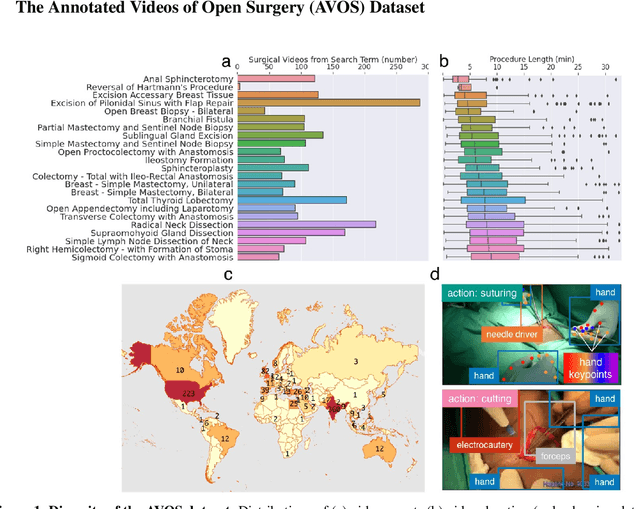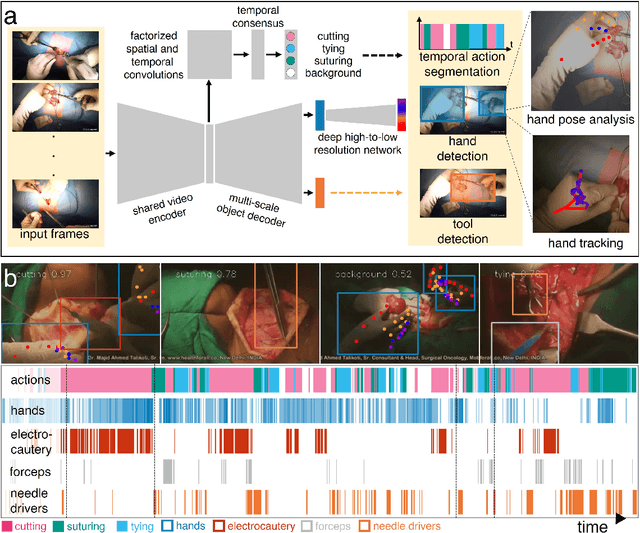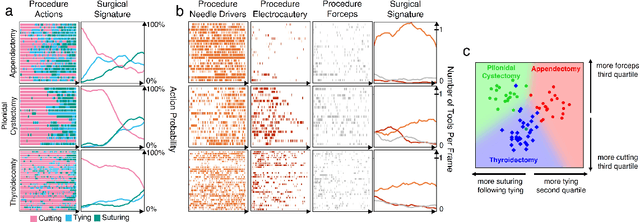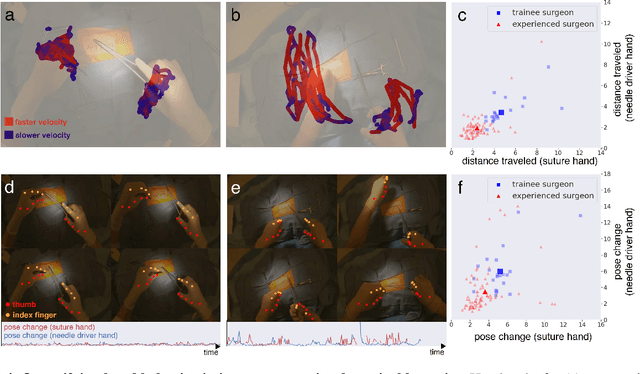Gabriel A. Brat
A real-time spatiotemporal AI model analyzes skill in open surgical videos
Dec 14, 2021



Abstract:Open procedures represent the dominant form of surgery worldwide. Artificial intelligence (AI) has the potential to optimize surgical practice and improve patient outcomes, but efforts have focused primarily on minimally invasive techniques. Our work overcomes existing data limitations for training AI models by curating, from YouTube, the largest dataset of open surgical videos to date: 1997 videos from 23 surgical procedures uploaded from 50 countries. Using this dataset, we developed a multi-task AI model capable of real-time understanding of surgical behaviors, hands, and tools - the building blocks of procedural flow and surgeon skill. We show that our model generalizes across diverse surgery types and environments. Illustrating this generalizability, we directly applied our YouTube-trained model to analyze open surgeries prospectively collected at an academic medical center and identified kinematic descriptors of surgical skill related to efficiency of hand motion. Our Annotated Videos of Open Surgery (AVOS) dataset and trained model will be made available for further development of surgical AI.
Using Computer Vision to Automate Hand Detection and Tracking of Surgeon Movements in Videos of Open Surgery
Dec 13, 2020



Abstract:Open, or non-laparoscopic surgery, represents the vast majority of all operating room procedures, but few tools exist to objectively evaluate these techniques at scale. Current efforts involve human expert-based visual assessment. We leverage advances in computer vision to introduce an automated approach to video analysis of surgical execution. A state-of-the-art convolutional neural network architecture for object detection was used to detect operating hands in open surgery videos. Automated assessment was expanded by combining model predictions with a fast object tracker to enable surgeon-specific hand tracking. To train our model, we used publicly available videos of open surgery from YouTube and annotated these with spatial bounding boxes of operating hands. Our model's spatial detections of operating hands significantly outperforms the detections achieved using pre-existing hand-detection datasets, and allow for insights into intra-operative movement patterns and economy of motion.
 Add to Chrome
Add to Chrome Add to Firefox
Add to Firefox Add to Edge
Add to Edge